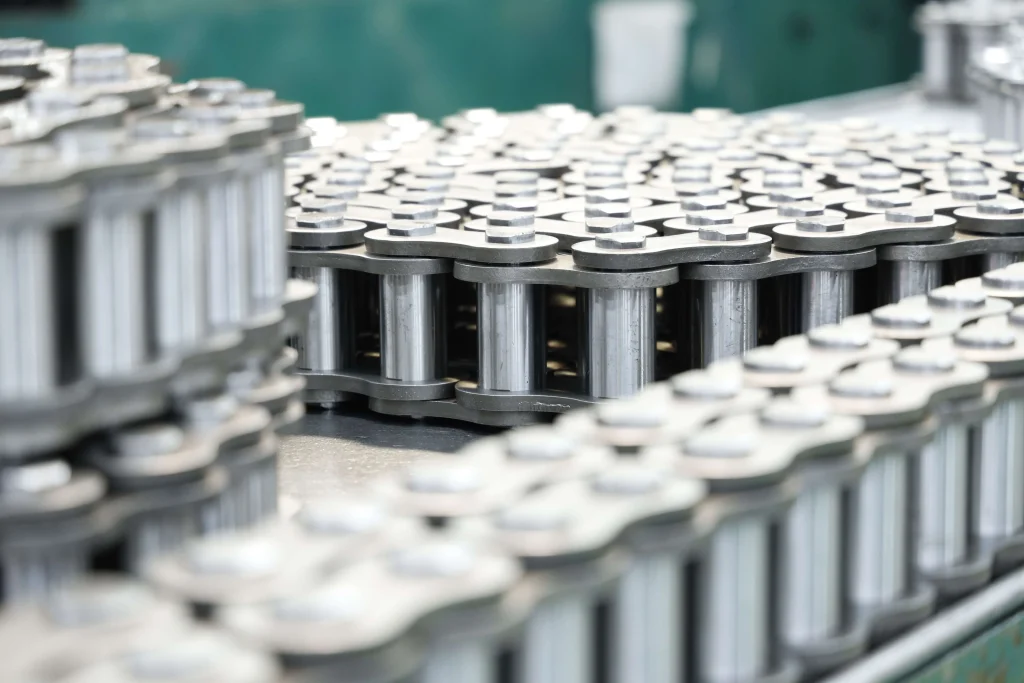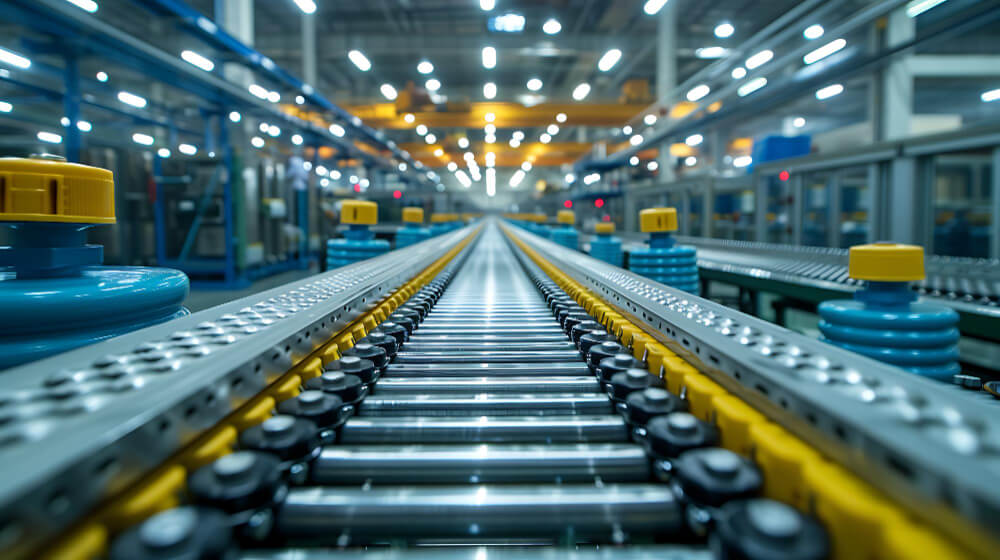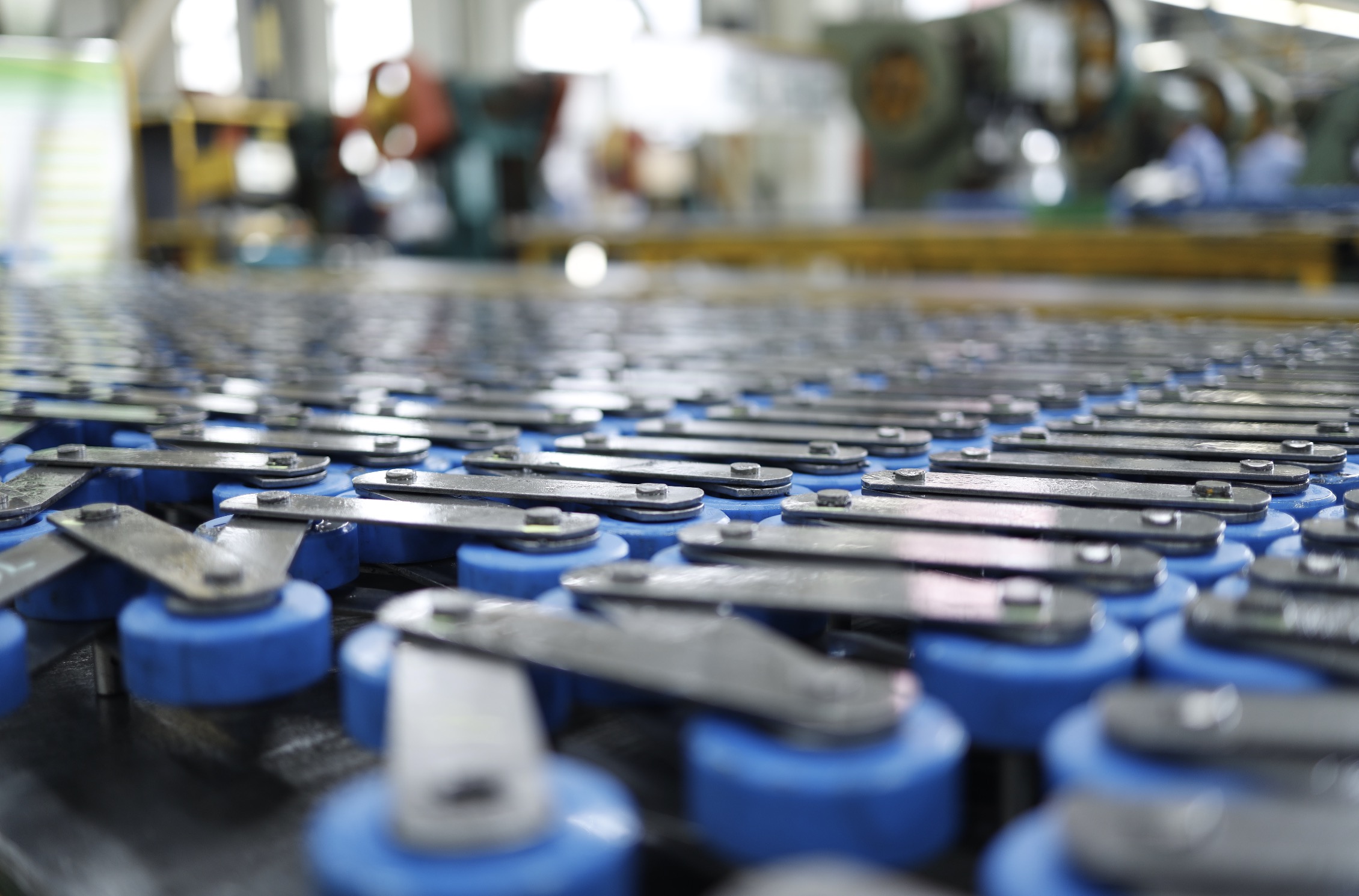Belt drive vs chain drive, which is better?
While chain drives and belt drives serve similar purposes, they differ in their components, efficiency, maintenance requirements, and suitable applications.
Both systems are designed to transfer power from one component to another, but they have distinct characteristics that make them suitable for different applications.
Overview of Chain Drives

Components
What are the components of a chain drive system? The components of a chain drive system consist of sprockets, a chain, and tensioners. The sprockets are toothed wheels that engage with the chain, while the chain is made up of interconnected links that mesh with the sprocket teeth. Tensioners are used to maintain proper chain tension and prevent slippage.
Types of Chain Drives
What are the types of chain drives? There are several types of chain drive assemblies: roller chains, silent chains, and engineering plastic chains.
Roller chains are the most common and consist of inner and outer plates connected by rollers. Silent chains have inverted teeth that provide quieter operation while engineering plastic chains are lightweight and corrosion-resistant.
Advantages of Chain Drives
Chain drives offer several advantages, such as high efficiency (up to 98%), the ability to transmit high torque, and the capability to operate in harsh environments. They can also accommodate longer distances between shafts and tolerate minor misalignments.
Disadvantages
However, chain drives have some drawbacks. They require regular lubrication and maintenance to prevent wear and stretch. They can also be noisy, especially at high speeds, and may exhibit vibrations. Additionally, chain drives are relatively heavy compared to belt drives.
Applications
Chain drive systems are commonly used in motorcycles, bicycles, industrial machinery, and conveyor systems. They are ideal for applications that require high torque transmission, such as in agricultural equipment and material handling systems.
Overview of Belt Drives
Components
A belt drive consists of pulleys and a belt. The pulleys are smooth-surfaced wheels that support the belt, while the belt is a flexible loop made of rubber, polyurethane, or other materials. Some belt drives may also include tensioners to maintain proper belt tension.
Types
There are various types of belts used in belt drives, including V-belts, synchronous belts (timing belts), and flat belts. V-belts have a trapezoidal cross-section and provide good grip, while synchronous belts have teeth that engage with corresponding grooves on the pulleys for precise timing. Flat belts are simple and economical but have limited power transmission capabilities.
Advantages
Belt drives offer several advantages over chain drives. They are generally quieter and smoother in operation, requiring less lubrication and maintenance. Belts are also lighter in weight and can dampen vibrations. Additionally, belt drives can accommodate misalignments more easily than chain drives.
Disadvantages
However, belt drives have some limitations. They are less efficient than chain drives, typically ranging from 90-95% efficiency. Belts can slip, especially under high torque loads, and may require frequent tension adjustments. They are also not suitable for extremely high or low-temperature environments.
Applications
Belt drives are commonly used in automotive engines (timing belts), HVAC systems, agricultural machinery, and power transmission applications where noise reduction and low maintenance are priorities.
Differences between Belt Drives and Chain Drives:
| FEATURE | CHAIN DRIVES | BELT DRIVES |
| Efficiency | More efficient (up to 98%) | Less efficient (90-95%) |
| Maintenance | Requires regular lubrication and maintenance | Generally requires less maintenance |
| Noise and Vibration | Noisy and can vibrate | Quieter and smoother operation |
| Load Capacity | Higher torque capacity | Lower torque capacity |
| Misalignment Tolerance | Less tolerant of misalignment | More tolerant of misalignment |
| Environmental Factors | Suitable for harsh environments | Less suitable for harsh environments |
How to Choose Between Belt Drive and Chain Drive
When deciding between a belt drive vs chain drive, consider the following factors:
Power Transmission Requirements
Assess the torque, speed, and power transmission needs of your application. Chain drives are better suited for high torque loads, while belt drives are sufficient for lower torque applications.
Operating Environment
Consider the temperature, humidity, and presence of contaminants in the operating environment. Chain drives can withstand harsher conditions, while belt drives are more suitable for cleaner environments.
Maintenance and Longevity
Evaluate the required maintenance intervals and the expected lifespan of the system. Chain drives require more frequent lubrication and maintenance, while belt drives generally have a longer service life with less maintenance.
Noise and Vibration Constraints
If noise and vibration are concerns in your application, belt drives may be the better choice due to their quieter and smoother operation.
Space and Weight Limitations
Consider the available space and weight constraints in your system. Belt drives are typically lighter and more compact than chain drives.
Cost
Compare the initial cost and the long-term cost of ownership, including maintenance expenses and replacement intervals. Belt drives may have a lower initial cost, but chain drives may offer better long-term value in high-torque applications.
Helping You With All Your Chain Needs
So which is better, belt drive vs chain drive? The answer ultimately depends on the specific requirements of your application.
Chain drive systems excel in high-torque, heavy-duty applications and can withstand harsh environments, while belt drives offer quieter operation, lower maintenance, and better misalignment tolerance.
By carefully evaluating your power transmission needs, operating conditions, and other factors, you can select the most suitable option between a chain drive assembly and a belt drive for your specific application.Contact us today to know more!


